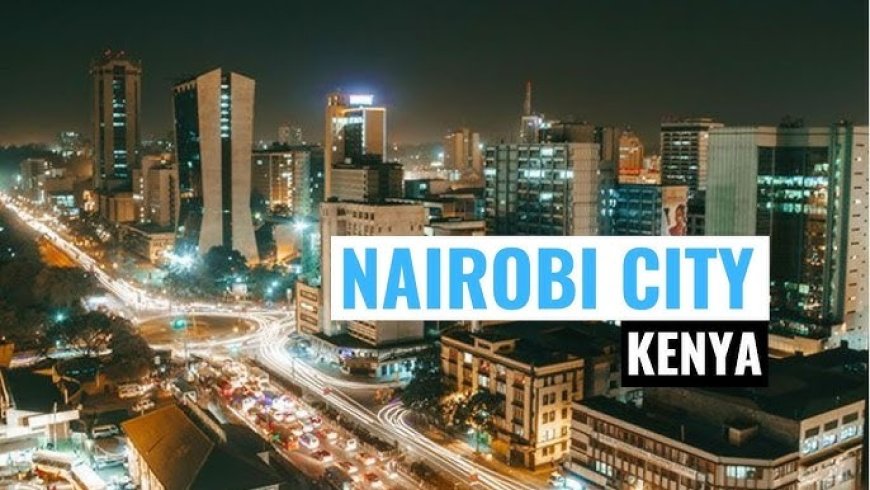Nairobi: A Vibrant Heartbeat of East Africa

Introduction
Nairobi, the capital city of Kenya, is more than just a bustling urban center — it is a dynamic fusion of tradition and modernity. Often referred to as the "Green City in the Sun," Nairobi holds a special place in Africa as a political, economic, and cultural powerhouse. From its vibrant markets and eclectic culinary scene to its modern skyscrapers and proximity to wildlife, Nairobi is a city that constantly surprises and captivates visitors.
This blog post explores Nairobi in depth — its history, attractions, economy, culture, and travel tips — while presenting the information in a structured format including tables and lists for quick reference.
The Historical Roots of Nairobi
From Railway Depot to Capital City
Nairobi began its journey in 1899 as a railway depot on the Uganda Railway. Its location, halfway between Mombasa and Kampala, made it a strategic point for the British colonialists. By 1907, it had become the capital of the British East Africa Protectorate and later the Republic of Kenya after independence in 1963.
Despite its colonial past, Nairobi has grown into a diverse metropolis, reflecting both the struggles and triumphs of Kenya's national identity.
Nairobi Today: A Modern Metropolis
The Economic and Cultural Pulse of Kenya
Nairobi is home to over 4.5 million people, making it the largest city in Kenya and one of the fastest-growing in Africa. It serves as an economic hub, housing major international organizations like the United Nations Environment Programme (UNEP) and the United Nations Human Settlements Programme (UN-Habitat).
The city is a melting pot of cultures, languages, and communities. From the corporate corridors of Upper Hill to the vibrant energy of Gikomba Market, Nairobi offers a wide range of experiences.
Top Attractions in Nairobi
Nairobi combines the raw beauty of African wildlife with the sleek appeal of modern city life. Below is a table highlighting the most popular places to visit in the city:
Top Tourist Attractions in Nairobi
| Attraction | Description | Entry Fee (Approx.) |
|---|---|---|
| Nairobi National Park | Wildlife reserve within city limits, home to lions, rhinos, and more | $43 (foreign adult) |
| Giraffe Centre | Conservation site for endangered Rothschild giraffes | $15 |
| David Sheldrick Wildlife Trust | Elephant orphanage promoting wildlife conservation | Donation-based |
| Karen Blixen Museum | Historic home of the author of Out of Africa | $12 |
| Nairobi Railway Museum | Showcasing Kenya’s rail history with vintage trains and exhibits | $6 |
| Bomas of Kenya | Cultural center offering traditional music, dance, and homestead exhibits | $10 |
Nairobi Lifestyle: Culture, Cuisine & Community
A Blend of Tradition and Innovation
Nairobi is where tribal traditions meet urban sophistication. The city’s culinary scene reflects its diversity — from nyama choma (grilled meat) and ugali to international cuisines. Nairobians are known for their entrepreneurial spirit, which is evident in the ever-growing tech sector, nicknamed "Silicon Savannah."
Nairobi’s Most Iconic Foods
-
Nyama Choma – Charcoal-grilled beef or goat, a local favorite.
-
Ugali – A maize flour staple served with vegetables or meat.
-
Sukuma Wiki – Stir-fried collard greens, often a side dish.
-
Mandazi – Sweet fried bread, perfect with chai.
-
Chapati – Indian-inspired flatbread, a Nairobi staple.
Cultural Highlights in Nairobi
-
Matatu art – Nairobi’s buses are colorfully painted and themed.
-
Live music – From Benga to Afro-pop, Nairobi has a thriving music scene.
-
Open-air markets – Masai Market offers everything from crafts to jewelry.
Nairobi’s Role in Business and Technology
Africa’s Emerging Tech Capital
Nairobi is rapidly transforming into one of Africa’s top technology destinations. The city boasts a young, educated population and a supportive environment for startups.
Major innovations like M-Pesa, the mobile money service, originated in Nairobi and revolutionized financial transactions across Africa.
Key Economic Sectors in Nairobi
| Sector | Contribution to Economy | Notable Companies/Projects |
|---|---|---|
| Information Tech | 10% and growing | Safaricom, Andela, M-Pesa |
| Finance | Regional financial center | Equity Bank, KCB, Nairobi Securities Exchange |
| Tourism | Major revenue source | Safari companies, hotels |
| Manufacturing | Food, textiles, consumer goods | Bidco, Brookside |
| Agriculture | Export hub for flowers, tea, and coffee | Kenya Flower Council, KTDA |
Navigating the City: Transportation and Safety
Getting Around Nairobi
While Nairobi has a public transport network that includes matatus, buses, and boda-bodas (motorcycle taxis), traffic congestion remains a significant issue. Ride-hailing services like Uber and Bolt are available and widely used.
Safety varies by area. While most central areas are safe during the day, travelers are advised to avoid walking alone at night, especially in informal settlements.
Travel Tips for Nairobi
-
✔ Carry small denominations of Kenyan shillings for easy transactions.
-
✔ Use registered taxis or ride-hailing apps.
-
✔ Try local street food—but choose clean, busy vendors.
-
✘ Don’t display valuables in public.
-
✘ Avoid using unlicensed motorcycle taxis.
Climate and Best Time to Visit
Nairobi enjoys a mild climate due to its high elevation (1,795 meters or 5,889 feet). The city has two rainy seasons — March to May and October to December.
Nairobi Weather Overview
| Season | Months | Average Temp (°C) | Conditions |
|---|---|---|---|
| Dry Season | Jan–Feb, Jun–Sep | 20–25°C | Clear skies, ideal |
| Long Rains | March–May | 18–23°C | Wet, humid |
| Short Rains | Oct–Dec | 19–24°C | Intermittent showers |
Nairobi's Challenges and Future Outlook
Like many major cities, Nairobi grapples with urban challenges such as traffic congestion, waste management, and income disparity. However, projects like the Nairobi Expressway, smart city developments like Konza Techno City, and growing civic engagement point toward a promising future.
Conclusion
Nairobi is a city of contrasts and convergence — where Maasai herders can be seen walking near tech hubs and skyscrapers. Its charm lies in this diversity. Whether you're a tourist seeking adventure, a business traveler pursuing opportunity, or a local navigating its dynamic energy, Nairobi offers something for everyone.
From the roar of lions at Nairobi National Park to the clatter of matatus on Kenyatta Avenue, Nairobi is a city alive with rhythm, purpose, and soul. It is East Africa’s nerve center — and its heart beats strong.






























